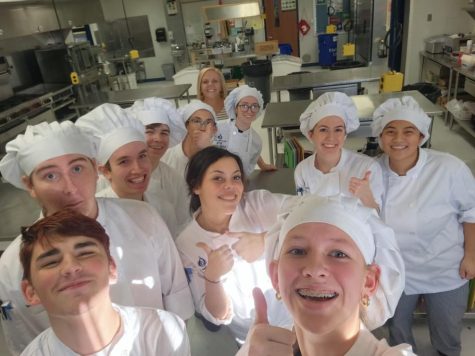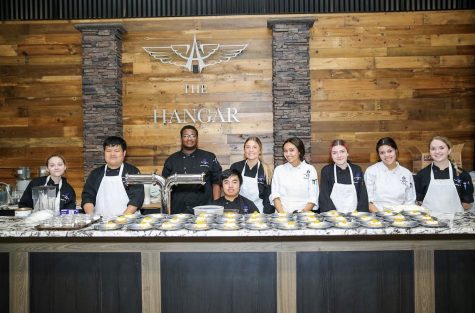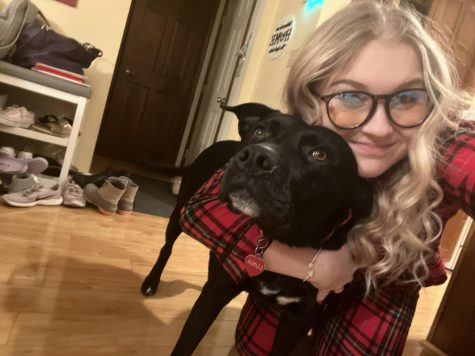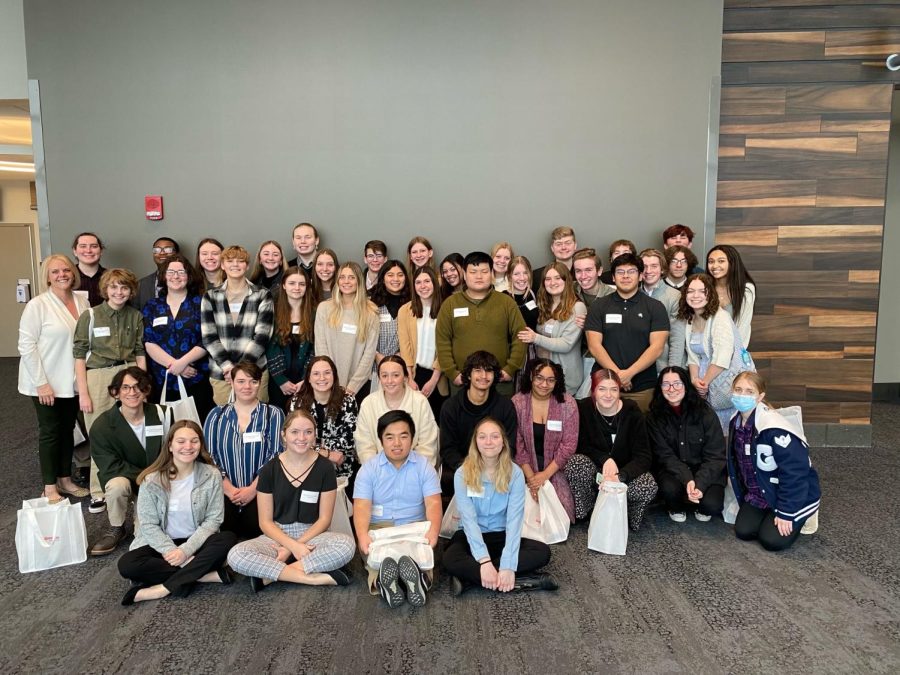Culinary groups slice through the competition
Over this past semester, the Culinary I and II students have been preparing nonstop for competition season. However, there are many different competitions. For instance, there is a class competition and the competition team. The team is known as Blue Flame.
Renee Sigmon runs the competition team and class. Sigmon has been teaching the class for 20 years and has been running the culinary program since 2006-2007. The team is very well known and has won state many times within her teaching career.
When Sigmon started teaching at the school, it did not have a classroom for the program. It had the standard six-kitchen lab.
“When we went through renovations in the early 2000s, the school board approved renovating a room for the culinary classroom,” Sigmon said.
Sigmon was first brought into the culinary field when she was just a kid. Her mom taught her how to cook and they ended up starting a joint catering business as a side job. However, culinary is not the only subject that she could be teaching.
“What many people don’t know is that I am licensed in all family and consumer sciences areas, so I could teach fashion, interior design, child development, etc… However, at Carroll, our department is lucky in that we each teach our area that we “love”,” Sigmon said.

For the students who still have an interest in culinary but don’t necessarily want to compete in the state competition, they have class competitions. One of the culinary I students, Reagan Ormiston, has just recently started her journey in Culinary this year.
“Being a part of culinary this year has helped me gain many different skills. When I was younger I was not able to even make mac and cheese for myself without burning it and now I am able to prepare healthy meals,” Ormiston said.
Although class comp and competition comp sound different, they are very similar. Class competition is very competitive and requires a lot of quick thinking as does the competition team. However, in most cases, class competition can bring more stress to the students.
“Year one students compete in the culinary competition, which is preparing a three course dinner in one hour with no electricity or running water. Year two students participate in the culinary management program which includes writing a business plan for a restaurant. The difference between the two is you have to audition to participate in state competition, ” Sigmon said.
There are many stress factors in the class but the environment never changes. With Culinary being stressful, taking the course has many pros and there are cons. Culinary I student Chayce McCoy touches on his first year of being on the competition team Blue Flame and the responsibilities that came with it.
“Although it can be a stressful environment, you learn how to make quick decisions under pressure. It does get very competitive. Some days we get to the school at 4 in the morning to practice and then have to go about our normal school day,” McCoy said.
Culinary has become a bigger part of the school over the years. They help out with concessions at football games, prepare food for administration breakfast, and cater for the fashion shows. With the students taking part in that together they form a close bond.
“We are told to treat each other like brother and sister which honestly is a very good representation of our bond. We can go from supporting each other to arguing over ingredients in the span of two seconds but we still love each other,” Ormiston said.

With Culinary helping out the school in many ways, it requires a big time commitment. The hours vary, however, they are definitely more than what other students in high school are used to. Along with that, it also depends on if they are catering that week or preparing for a competition.
“On a busy week, meaning we have catering events or preparing for a competition, I am at school 15-17 hours a day. On a normal week, I am typically here 9-10 hours a day,” Sigmon said.
The Culinary program itself is two years long. Normally students will take culinary I their junior year and then culinary II their senior year. Being a part of the competition team, Blue Flame, is optional for those in the culinary program. Culinary II student Allison Stankiewicz has been a part of the culinary program and competition team her junior and senior year.
“It is a great experience and I have been able to learn many things that I will be able to apply later in life. In this program, you get to experience many real-life scenarios,” Stankiewicz said.
When students on Blue Flame go and compete at state, they get to stay in a hotel with their teams. Although it can get a tad stressful, students are able to be around their friends during all of it. In most cases, competing at state is viewed as easier than the practice they do at school.
“I hope students would say competing at state is easier than practicing. During practice, I bring in chef mentors and other adults to help students grow their skill sets and prepare for the rigor of the competition,” Sigmon said.
Not only does the culinary program help students while in high school, but it also helps them in college. By being a part of the culinary program, it opens up the opportunity for more scholarships to college. Along with that, it opens up a window of opportunity for many jobs after college.
“Students have earned over $1.5 million in college scholarships, have had some amazing jobs in the industry, and are all still very supportive of the program,” Sigmon said.
While there are many stressful factors that can come with culinary, joining the culinary program is a great experience to have in high school. You are able to create long-lasting friendships and learn many different life skills. Being able to step out into the real world after high school with the skills you learn in this program helps out many students in the long run.

Anna Layden is a Junior at Carroll High School. She likes to go shopping and hang out with her friends in her free time. She works at Dry Goods located...







